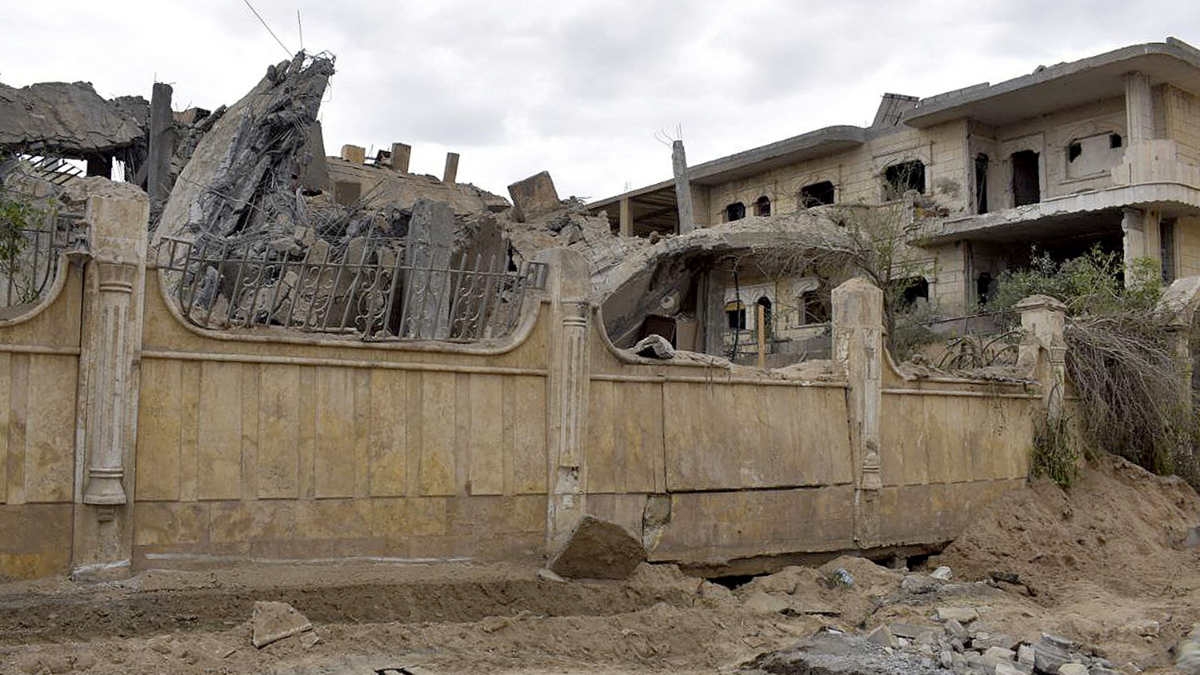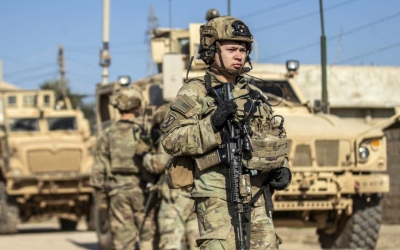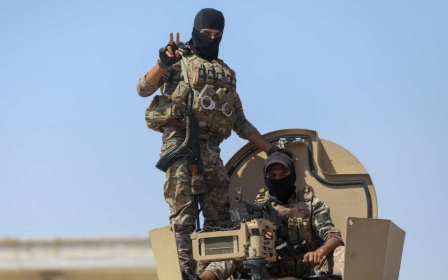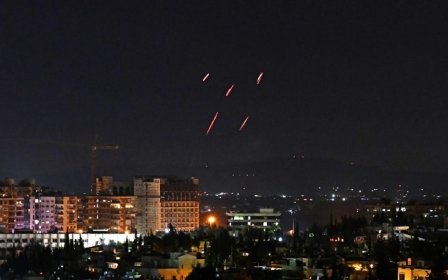Deadly air strikes in Syria kill over a dozen including WHO worker

A hotly contested area of northeast Syria was pounded by air strikes on Tuesday, killing over a dozen people including a member of the World Health Organisation and at least one Iranian Revolutionary Guard Corps (IRGC) official, according to several reports.
The World Health Organisation said the strikes killed Emad Shehab, 42, an engineer who has been working on water, sanitation, and hygiene in the impoverished region for the UN agency since 2022, WHO chief Tedros Adhanom Ghebreyesus said on the social media site, X.
The Syrian Observatory for Human Rights didn’t say who carried out the strikes, but said "an Iranian Revolutionary Guards Corps (IRGC) adviser, his two Iranian security escorts, two Syrian fighters" and five other members of Iranian-backed militias were killed.
The Observatory said the strikes targeted a villa being used as a “communications centre" in the area by Iranian-backed groups, reporting that the building was destroyed and its Syrian owner, a civilian, was also killed.
Syrian state media claimed “US occupation forces” launched the air strikes on Tuesday morning on towns, villages and military sites across Deir Ezzor, killing 13 military personnel and one civilian, and wounding 19 military personnel and 13 civilians.
New MEE newsletter: Jerusalem Dispatch
Sign up to get the latest insights and analysis on Israel-Palestine, alongside Turkey Unpacked and other MEE newsletters
Iran's state news agency, Irna, also reported the attack and said a member of the Quds force, the foreign operations arm of the IRGC, was killed.
A US defence official told MEE that the "US did not conduct any air strikes yesterday evening".
Meanwhile, four other fighters were killed in a separate strike in the town of Albu Kamal on the Iraqi border, said the Britain-based Observatory, which has a network of sources inside Syria.
In total, it said that nine of those killed in the strikes were Iraqi nationals.
Israel has conducted hundreds of strikes on Iranian-backed groups in Syria but rarely comments on its military actions there.
Deir Ezzor battleground
Israel has escalated its air campaign against Iranian-backed groups in Syria since the Hamas-led 7 October attacks on southern Israel and its invasion of Gaza.
Israel is also engaged in a simmering border war with Hezbollah in Lebanon, where it has launched strikes deep into the Iranian-backed group's Beirut and Bekaa Valley heartland. On Tuesday, Israel launched strikes on northeast Lebanon which killed at least two Hezbollah fighters. Israel acknowledged those strikes.
As the fighting in Gaza slowly seeps out beyond the besieged Mediterranean enclave's borders, it has also entangled the US, which has launched its own strikes against members of Iran’s so-called "axis of resistance" in Yemen, Iraq and Syria.
Iran and its allies have seen the war in Gaza as an opportunity to pressure the US into withdrawing from the region and have escalated their attacks on US forces in Iraq and Syria.
Deir Ezzor is at the frontlines of the shadowy proxy war between the US and Iran. The impoverished region is split along the Euphrates River, with the US and its Kurdish-led Syrian Democratic Forces allies holding the eastern bank, while Syrian government forces and their Russian and Iranian allies control the west.
The US maintains around 900 troops in northeast Syria.
Deir Ezzor is particularly vulnerable because it is comprised mainly of Sunni Arabs who have grievances against the Kurdish-dominated SDF.
The East Bank tribes, some with ties to the Assad government, revolted against the Kurdish-led semi-autonomous Syrian administration in August. The IRGC has been actively recruiting the tribes against the US since the Gaza war erupted, MEE previously reported.
In February, US strikes killed 29 pro-Iran fighters in Deir Ezzor and Mayadeen areas in response to a deadly drone attack on a US base called Tower 22 that killed three US soldiers across the border in Jordan.
The US has said it would respond to the attack on Tower 22 at any time and place of its choosing, but there are indications Tehran and Washington have both tried to temper tensions in recent weeks.
Since February, Iranian-backed groups have largely stopped attacking US troops.
Middle East Eye delivers independent and unrivalled coverage and analysis of the Middle East, North Africa and beyond. To learn more about republishing this content and the associated fees, please fill out this form. More about MEE can be found here.





